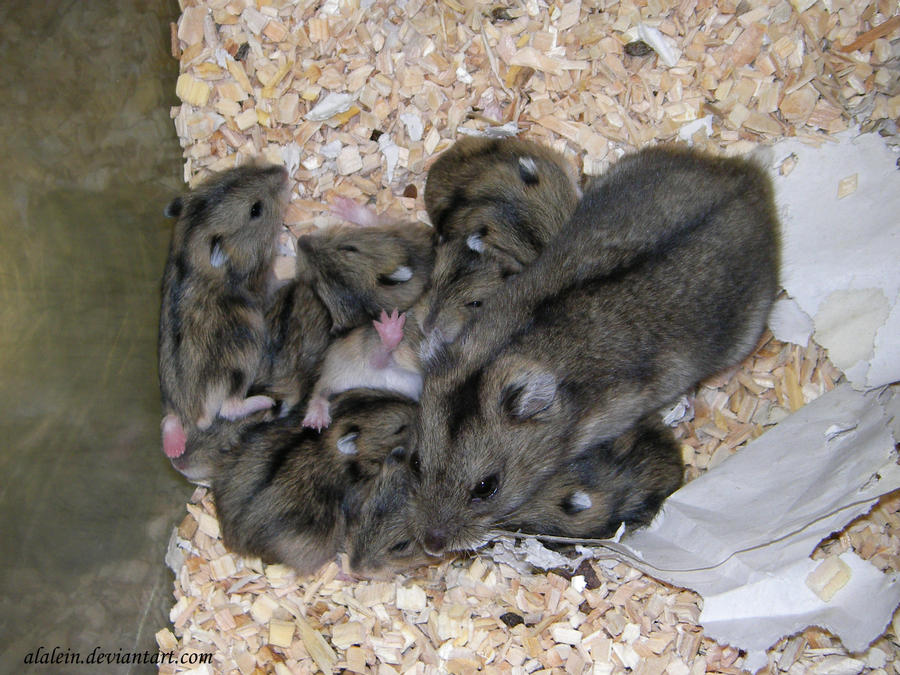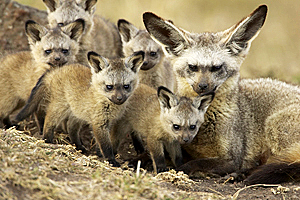I recently assigned our second year evolutionary biology
students the task of creating a blog dedicated to some aspect of evolutionary
biology. They did an amazing job, so much so that I’ve decided to change my
blogging to express a little more closely my biological interests, rather than
just focusing on a particular journal article. I thought I’d start by focusing
the next few blogs on one of my major interests, the development and expression
of paternal care behaviour.
So, what is paternal care? Paternal care, as defined by
Dewsbury (1985) and Woodroffe &Vincent (1994), is any direct or indirect
non-gametic investment that is made by the father after fertilization that
either directly or indirectly benefits his offspring. Direct paternal care
includes behaviours performed in the young’s presence such as huddling (e.g.
Djungarian hamsters Phodopus sungorus; Fig. 1), grooming, retrieving,
providing food, defending against predators, babysitting or socializing
(Malcolm 1985).


Fig.
1 Djungarian
hamster Phodopus sungorus
(Alalein: picture
accessed 04 July 2014; 15h26)
(http://www.deviantart.com/morelikethis/artists/310003570?view_mode=2)
Importantly, these behaviours can influence the survival, growth and behavioural and cognitive development of the young. Indirect paternal care includes behaviours performed in the absence of young, but which may still influence survival, growth and development. These behaviours can include alarm calling (e.g. California ground squirrels Otospermophilus beecheyi; Video 1), female care and provisioning and territory maintenance (Malcolm 1985).
(Life at Laguna: video
accessed 04 July 2014; 15h26)
(http://www.youtube.com/watch?v=RmfDbWH46bQ)
While paternal care is relatively common in birds, it tends to be quite rare in mammals, occurring in only 5-10% of species (Wright 2006). Paternal care has been recorded in six mammalian orders, namely carnivores (e.g. bat-eared foxes Otocyon megalotis, Wright 2006; Fig. 2), cetaceans (e.g. killer whales Orcinus orca, Lopez & Lopez 1985), diprotodontids (e.g. rock-haunting ringtail possums Petropseudes dahlia, Runcie 2000), primates (e.g. common marmosets Callithrix jacchus, Schradin et al. 2003; humans Homo sapiens; Quinlan 2003), lagomorphs (e.g. European wild rabbits Oryctolagus cuniculus; Cowan 1987) and rodents (e.g. African striped mice Rhabdomys pumilio, Schradin & Pillay 2003; Fig. 3).
(http://www.deviantart.com/morelikethis/artists/310003570?view_mode=2)
Importantly, these behaviours can influence the survival, growth and behavioural and cognitive development of the young. Indirect paternal care includes behaviours performed in the absence of young, but which may still influence survival, growth and development. These behaviours can include alarm calling (e.g. California ground squirrels Otospermophilus beecheyi; Video 1), female care and provisioning and territory maintenance (Malcolm 1985).
Video
1 California ground squirrel Otospermophilus beecheyi alarm calling)
(http://www.youtube.com/watch?v=RmfDbWH46bQ)
While paternal care is relatively common in birds, it tends to be quite rare in mammals, occurring in only 5-10% of species (Wright 2006). Paternal care has been recorded in six mammalian orders, namely carnivores (e.g. bat-eared foxes Otocyon megalotis, Wright 2006; Fig. 2), cetaceans (e.g. killer whales Orcinus orca, Lopez & Lopez 1985), diprotodontids (e.g. rock-haunting ringtail possums Petropseudes dahlia, Runcie 2000), primates (e.g. common marmosets Callithrix jacchus, Schradin et al. 2003; humans Homo sapiens; Quinlan 2003), lagomorphs (e.g. European wild rabbits Oryctolagus cuniculus; Cowan 1987) and rodents (e.g. African striped mice Rhabdomys pumilio, Schradin & Pillay 2003; Fig. 3).
Fig. 2 Bat-eared
fox Otocyon megalotis
(Joe & Mary Ann McDonald: picture accessed 04 July 2014; 14h32)
(http://hoothollow.com/Trip%20Report%20-%20Kenya%20Nov-Dec%202005.html)
(Joe & Mary Ann McDonald: picture accessed 04 July 2014; 14h32)
(http://hoothollow.com/Trip%20Report%20-%20Kenya%20Nov-Dec%202005.html)
Fig. 3. African striped mouse Rhabdomys pumilio
(Tasmin Rymer: personal picture)
In my next blog, I’ll focus a bit more on the evolution of paternal care.

0001.jpg)


No comments:
Post a Comment